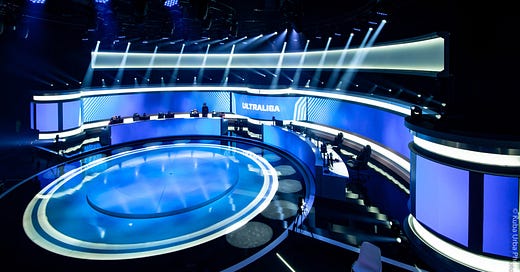In a market flooded with visually impressive LED screens, making the right choice for a permanent AV installation goes far beyond looks. While many displays appear similar at first glance, the real differentiator lies in the quality of components and build materials.
Manufacturers offer products at various price points—ranging from budget-friendly to premium—but not every installation requires the most expensive option. The challenge is knowing what to choose, why it matters, and which brands currently offer the best quality-to-price ratio for your specific needs.
Whether you’re installing an LED wall in a corporate boardroom, a retail storefront, or an outdoor advertising display, selecting the right model means balancing key factors like pixel pitch, brightness, durability, and maintenance accessibility. Here’s what you need to consider before making a long-term investment.
1. Defining Your Application: Indoor vs. Outdoor
The first step in choosing an LED screen is understanding where and how it will be used.
Indoor Screens – Used in conference rooms, malls, control centers, and houses of worship. These typically require higher resolution and moderate brightness.
Outdoor Screens – Designed for billboards, stadiums, and public spaces. They need high brightness (5,000+ nits), weatherproofing (IP65+), and UV resistance to withstand the elements.
2. Resolution & Pixel Pitch: Finding the Sweet Spot
Resolution isn’t just about image clarity—it’s about matching pixel pitch to your viewing distance.
A smaller pixel pitch (P1.2–P2.5 mm) provides ultra-clear images for close-up applications like meeting rooms or high-end retail.
A mid-range pixel pitch (P3–P6 mm) is ideal for medium viewing distances (3-10 meters).
A larger pixel pitch (P8–P16 mm) works best for billboards and stadiums, where viewers are much farther away.
Rule of thumb:
Viewing Distance (in meters) ≈ Pixel Pitch × 1,000.
Choosing the right pixel pitch ensures sharp images without overpaying for unnecessary resolution.
3. Brightness & Contrast: Visibility in All Conditions
Not all LED screens handle ambient light the same way.
Indoor screens need 600-1,200 nits to remain visible in well-lit rooms.
Outdoor screens demand 5,000+ nits to remain readable in direct sunlight.
A high contrast ratio (≥ 3,000:1) ensures deeper blacks and vibrant colors.
For premium installations, HDR (High Dynamic Range) support can further enhance visuals, making content pop with greater detail and realism.
4. Durability & Weather Resistance: Built to Last
For outdoor installations, weatherproofing is non-negotiable.
IP Rating (Ingress Protection): A minimum of IP65 ensures dust and water resistance.
Screens should also tolerate extreme temperatures and humidity to avoid early failure.
For indoor installations, heat dissipation and build quality are more important than waterproofing.
5. Maintenance & Longevity: Plan for the Future
A well-chosen LED screen should last for years. But how easy is it to maintain?
Front-access panels allow for quick repairs when wall-mounted.
Modular design ensures easy replacement of faulty LED modules.
Reliable power & data connections prevent long-term failures.
Investing in high-quality LEDs and power supplies from reputable manufacturers (like Nichia, Cree, or Nationstar) can significantly extend lifespan.
6. Control System & Software: Managing Content with Ease
The brains behind an LED screen matter as much as the screen itself.
Control systems from brands like NovaStar, Colorlight, and Brompton ensure smooth operation.
Cloud-based management allows for remote content updates.
Compatibility with multiple input formats (HDMI, DVI, SDI, etc.) ensures flexibility.
7. Cost vs. Value: Finding the Best Quality-Price Ratio
While high-end brands dominate the premium market, more budget-conscious options often offer solid performance at lower costs.
The key is to match features to your actual needs—spending extra for unnecessary specs doesn’t guarantee better results.
Final Takeaway: A Smart Investment for Years to Come
Choosing the right LED screen means looking beyond the surface. It’s about balancing resolution, brightness, durability, and maintenance while considering budget constraints.
By carefully evaluating these factors—and selecting a manufacturer with a strong quality-to-price ratio—you ensure that your LED display remains a reliable, high-performing asset for years to come.
You may also want to read:
LED Screen Solutions for Trade Show Booths
Active diffuser technology: is this a new standard in professional entertainment lighting?
A-RENTAL supported ATM System for largest polish charity event “WOŚP 2025”
Stage Technician: Roles, Pathways, and Realities
Will IP-Rated lighting fixtures replace Non-IP models?
Top Lighting Brands Unveil Innovations at ISE 2025
Looking for SECOND HAND EQUIPMENT ? GET THE LIST





